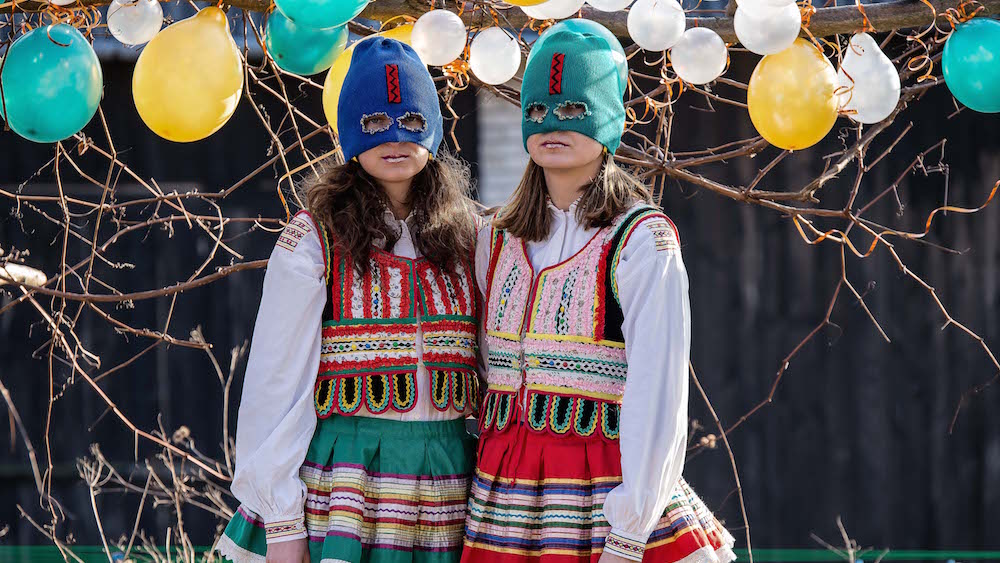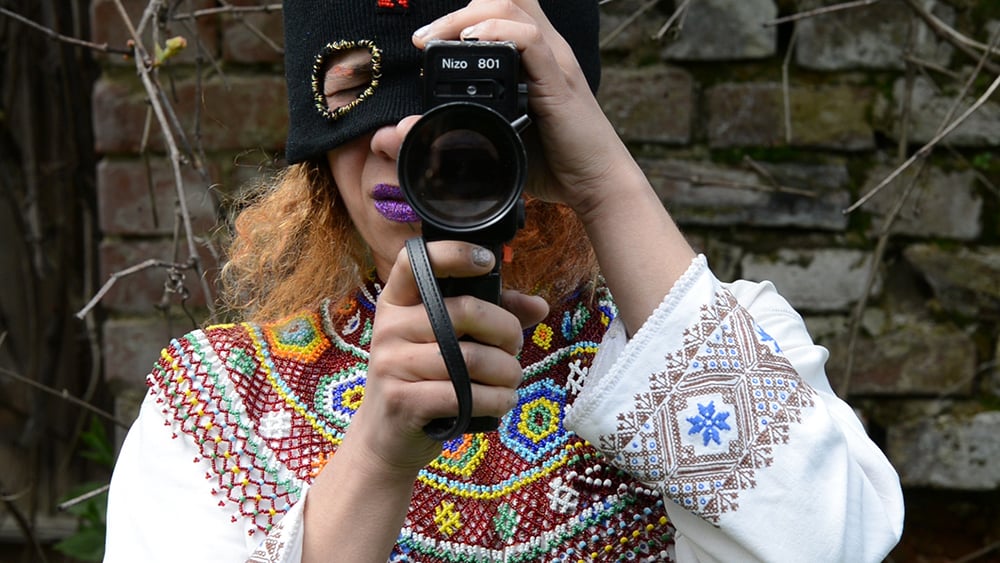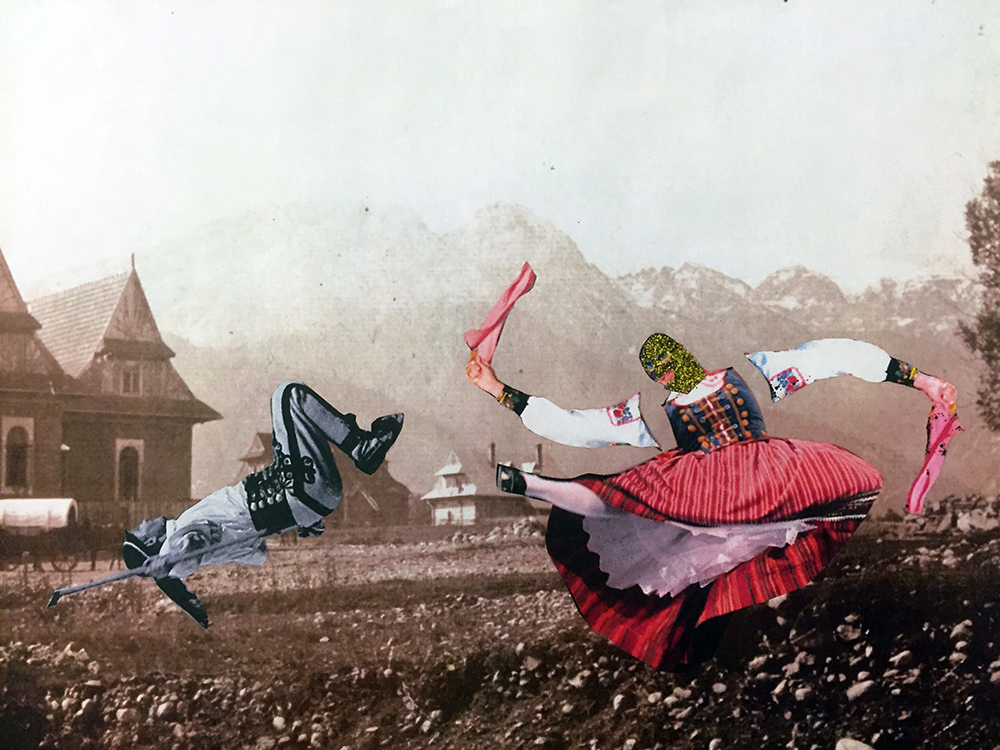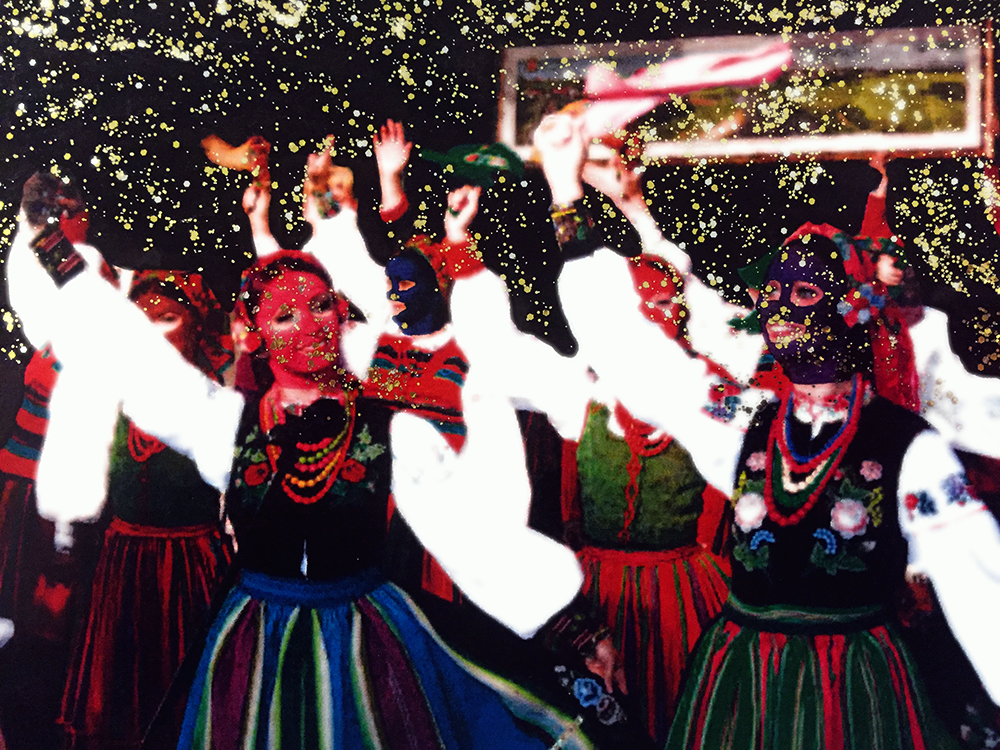Katarzyna Perlak: the artist reclaiming queer tradition for Poland
London-based Polish artist Katarzyna Perlak explores queer love, migration and national tradition in her multimedia work
On Saturday 11 November, around 60,000 Polish nationalists marched in Warsaw to mark the nation’s Independence Day. The rally was marked by various strains of fascistic rhetoric and symbolism — slogans included “We Want God”, “Europe must be white” and “Gays and lesbos, the whole of Poland is laughing at you” — and attracted international consternation. Naively, the West seem shocked at this mass manifestation of the kind of socially conservative, nationalist myth-making that has brought the Law and Justice (PiS) party to power, though quite how this hand-wringing should be squared with the rise of Trump — who lauded “Western civilisation” onstage in Warsaw only weeks beforehand — and the Brexiteers is anyone’s guess.
The day before the march, in the western city of Wrocław, two women in billowing white dresses were “married” in a traditional folk ceremony as part of Katarzyna Perlak’s performance piece, Polish Wedding without Censorship. Perlak’s combination of folk aesthetics and practices with queer identity in Polish Wedding and her earlier work Niolam Ja Se Kochaneczke (“Once I Had a Lover”, 2016) stands as a counterpart and a challenge to the reveries of a straight, white Polish nation proclaimed in the capital 24 hours later. Hers is a vision of queerness inherent to Polish identity and history, as well as a reflection on migration, diaspora life and her own Polish-British experience.
Extract from Niolam Ja Se Kochaneczke by Katarzyna Perlak (2016)
I meet Perlak in a studio in East London, where she is preparing to show Niolam Ja Se Kochaneczke as part of Bloomberg New Contemporaries 2017 (27 January–3 March). When I ask her about her play on “old” (folk) aesthetics, she makes an important distinction: “[My work] is not about combining “old” and “new” — it’s more about reclaiming the old that never got a chance to exist. In Poland and other parts of eastern Europe, queerness is treated as something “new”, something that arrived after communism with neoliberalism, coming from the West” — this is certainly the position adopted by many Polish right-wingers, who posit the rainbow flag-friendly EU establishment as a new occupying force to replace the Soviets of old. “But it’s not. Queer people have always existed, they were just not visible. That’s why I wanted to use something so identifiable as “eastern European”.”
In the short film at the heart of Niolam Ja Se Kochaneczke, masked women in traditional folk dress sew, dance and wander through a bucolic orchard scene. Most strikingly, they sing two regional folk love songs, the close harmonies and rough romance breaking through the odd staging into something genuinely moving. These songs demonstrate Perlak’s approach. “These folk traditions are part of how history was handed from one generation to the other, but queer stories are lacking in that oral history,” she says. “There are so many love songs but those stories are missing from them.” To uncover this hidden history requires only a sleight of hand: Perlak simply has women sing these songs, where necessary changing the pronouns and verb endings to make it clear that the protagonists are all female. Some percentage of the thousands of anonymous men and women who have sung these songs for generations have been queer — it’s up to you to recognise that the sentiments expressed are open to interpretation.
The lack of hierarchy inherent in the “folk” world — a communally owned pool of crafts and vocabulary — means it can transcend limitations of expression
There’s an intriguing link here with other eastern European folk traditions which have been taken up by LGBTQ artists and communities as a subtle but powerful way to communicate secretive, repressed desires. In Bosnia, the gender-fluid pop performer Božo Vrećo uses the traditional lament songs of sevdah to express the pangs of forbidden and unrequited love; in Serbia, the garish world of turbo-folk, where traditional rhythms and melodies are backed up by pumping synths and club beats, is increasingly becoming a refuge for the country’s LGBTQ youth. The lack of hierarchy inherent in the “folk” world — a communally owned pool of crafts and vocabulary — means it can transcend limitations of expression that otherwise afflict some national cultures. As Perlak points out, many eastern European languages still “lack the vocabulary” to speak about LGBTQ desire: “there is no “Polish” word, you just say, “queer”. Since these words never existed in this country, people can say to you: why would you think that this thing belongs to Poland?”
Perlak’s reclaiming of queer history — and her position as an artist in the Polish diaspora — means that her play on sexuality is also a commentary on national identity and migration. “I wanted to challenge the way that history and other things connected to national identity are hijacked by people with right-wing agendas,” she says, in direct reference to the Independence Day marchers. “I wanted to expand it, to show that this history contains queers and people of colour.” One of the singers in Niolam is mixed-race, while the main protagonist — Assia Ghendir — is a French-Algerian who came with Perlak from London. As she points out, “migration and love stories often go hand by hand”. In the south and east of Poland, where Perlak shot, borders have been redrawn countless times, with Ukrainian and Lithuanian influences remaining strong; the second song in the film is actually in the Rusyn dialect of the Lemkos, a Slavic minority from what is now western Ukraine.
Extract from Polish Wedding without Censorship by Katarzyna Perlak (2017)
Queering folk aesthetics also means taking LGBTQ discourse out of its usual urban setting, Perlak shot first in eastern Poland, near Lublin, then in the village of Wola Sękowa, south-east of Krakow. Both are known as relatively underdeveloped regions; the east of the country is often referred to as “Poland B”. In Lublin, she made a point of working with local folk singers. “It was important to shoot the film in a setting where these traditions actually exist and are still active,” she reasons. “These traditions are more present in eastern Poland — the people I worked with sing them regularly. It was them who suggested those songs to me.”
Perlak’s performative, ritualistic work, which makes a tabula rasa out of everyday institutions and practices like marriage, folk songs, reveals the lie at the heart of nationalist grandstanding. She has previously described her aim as “encouraging an experience of history as a discourse made out of multiple, overlapping and contesting narratives rather than a single, fixed entity.” And she is still fighting this battle as a diaspora artist, faced with the petty prejudices of funding councils. “There are Polish institutes in England and around Europe who share the politics of the Law and Justice government and who censor queer artists. When I apply for funding [from these groups], I can’t use the word “queer” at all. It’s quite absurd.” Nonetheless, there’s hope in her core message: that queer people and queer desire have always been here, and always will be. Each of us can make of that what we will.
Niolam Ja Se Kochaneczke is on display at Block 336 as part of Bloomberg New Contemporaries from 27 January–3 March
Join Katarzyna Perlak for a screening and discussion of her work at Calvert 22 Space on Wednesday 14 February
Text: Samuel Goff



